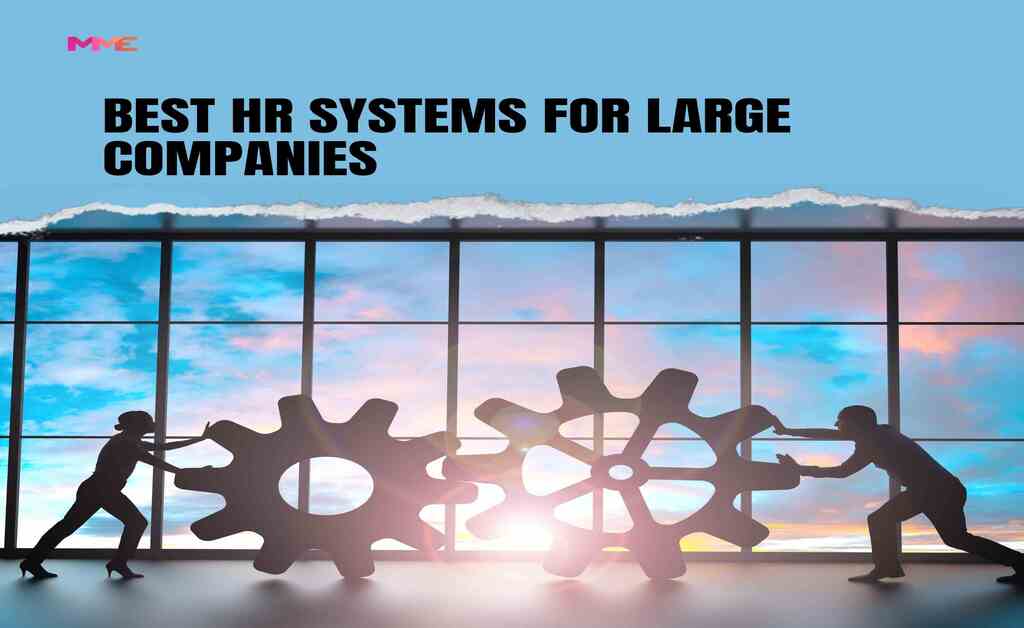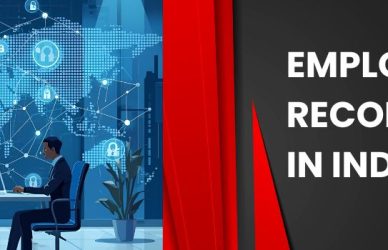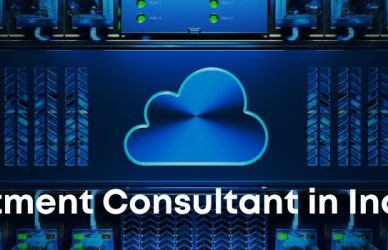Introduction
Hey there! Have you ever wondered how big corporations make their workforce serve as one united team? Keep reading for more information. Managing a large organisation’s workforce effectively is necessary in the dynamic business world, where speed is the key to success. Here, we can see the benefits of the Best HR Systems For Large Companies. Such platforms aim to digitise and give structure to HR functions by automating processes like recruitment and onboarding along with performance management and staff engagement. HR systems utilise current technology and create new attractions. Such hardware and software optimise employee management strategies.
The Best HR Systems For Large Companies have many advantages, from the automation of routine jobs to data-rich analytics for informed choices. They reduce time and resource requirements and increase worker satisfaction and productivity. The significance of investing in the right HR system must be considered as the digital age keeps evolving, and companies need to compete and have a vibrant organisational culture. Let’s now drill deeper into the adverse effects of HR systems at the top of the chain for large companies’ workforce management.

What Is An HR System?
A system called human resources information system is another name for HR system. This is an automated solution that the HR department needs to do its daily tasks and long-term objectives. These systems, which serve as the Best HR Systems For Large Companies, help to modernise traditional HR practices by reducing the HR department’s workload through automation and streamlining repetitive administration tasks. Technological systems, due to which the HR personnel and management can save time and reallocate it to strategic and value-added tasks, are successfully applied by companies to achieve their organisational goals.
HR software technology dates back to the 1970s when computers were used to collect employees’ data. HR systems have undergone impressive developments, particularly the introduction of the World Wide Web in the 1990s, which became a turning point for accessibility and user-friendliness. Currently, HR companies primarily use cloud-based architectures in their subscription-based systems, allowing for high adaptability to different organisations’ unique needs and goals while still within budget.
Modern Best HR Systems For Large Companies are developed to cover the most comprehensive array of functions, from recruiting and hiring employees to performance management and employee engagement. Besides, they provide an interface that makes the systems effectively work with other data management programs, which is beneficial in terms of productivity and efficiency.
Moreover, in the current day and age, modern HR systems come with essential analytics functionality, which helps organisations gain valuable insights from the available workforce data. These insights encourage HR professionals and organisational leaders to base their decisions on facts and data, optimise workforce planning, and promote a process evaluation and improvement culture.

5 Best HR Systems For Large Companies in 2024
Paycor
Regarding reputation, Paycor delivers on both payroll and HR aspects with excellence. It facilitates performing trivial tasks and reduces the time used for administrative and managerial purposes while making available self-service tools that employees can use to update their profiles and conduct routine tasks. Employee reports, the transparency of which reveals headcount, employee attrition, compensation, and absenteeism.
This Best HR Systems For Large Companies has mobile push notifications and Chat allow mass communication within the company. With the possibility of having unlimited workflows, organisations can only do the automation that is required for them. Custom workflows are present in Healthcare, manufacturing, Restaurant, professional, education, retail, and non-profit sectors. Paycor helps with benefits design and offers implementation assistance, too. Ideal for SMEs with less than 50 employees, a detailed solution can be provided to more prominent companies at a cost.
Pros
- On-demand pay
- Automated payroll included in low-tier plan
- Seven industry-specific builds
Cons
- Expensive, particularly for larger employee counts
Monday.com HR
Monday.com HR app is an all-rounder and one of the Best HR Systems For Large Companies that suffices every angle. Its efficient recruitment pipeline puts in place the right tools that schedule interview times and track candidates’ progress through the hiring process. The online training template translates into onboarding new employees that can be done more simply, thus reducing redundant questions. In addition, it makes employee management more accessible as it collects employee experience feedback to determine well-being and allows managers to be notified of leave requests immediately. Tracking performance and schedule features take much of the pain out of performance reviews.
Monday.com is also a communication platform that will separate communication between managers and their immediate subordinates. It provides various solutions outside HR to be applied in multiple sectors. While offering stellar consumer reviews with 5 price tiers, Monday.com is a more affordable and integrated option with an HR management solution crossing departments suitable for all companies (big or small) seeking a comprehensive HR management solution.
Pros
- Eight ready-to-use HR templates
- Ability to create customised flows
- Integration with workflow tools for finance, marketing, operations, and more
Cons
- No ability for contractor payments
- Team size selection is limited to multiples of five
Rippling
Rippling distinguishes itself as one of the Best HR Systems For Large Companies thanks to its all-encompassing support services, which extend across significant departments such as HR, IT, finance, and engineering. You can eliminate repetitive tasks by integrating and automating workflows in Rippling using triggers that allow vacation, tenure, or role updates. It can be customised using if/then statements, enabling if there are tasks that span third-party apps based on certain conditions.
The Rippling comprehensive library of HTML workflow initiation recipes has recipes across categories such as work-life balance policies & benefits enrollment reminders. Besides, the subscription package has all the extravagant features, including compensation management, employee onboarding, applicant tracking, learning management, and retirement planning.
It now only takes 90 seconds to get the payroll done with just one click, with the payroll tax calculations getting the job done automatically, which makes it easier for the managers. By contacting more than 4,000 network plans, employers can get the most invaluable benefits package of Medical, Dental, and Vision coverage for their employees. Rippling morphs the recruiting processes further by automating offer letter generation and background checks. It thus becomes a complete solution for firms that require a single HR, IT, finance, and engineering platform for simplifying automation.
Pros
- If/then automated workflows
- Integration of data between four departments
- Extensive library of hundreds of recipe templates
Cons
- Pricing isn’t transparent
- Limited customer support hours compared to competitors
Workday
Workday is one of the best HR Systems For Large companies, as it provides the necessary customised reports and a user-friendly interface. The home screen can be customised to show critical data in one go, for example, turnover rates, open positions, and head count. Since Workday has more than 80 jurisdictions covered by its compliance section worldwide, the software makes it easy to uphold compliance measures across locations, saving time and minimising the chances of violations.
The platform’s rewarding and informative org charts are demonstrated through the efficiency of feedback and promotions, while its talent procurement strategy focuses on skills for effective applicant selection. Workday also brings forth a holistic benefits administration experience for managing policy eligibility and plans anywhere the footprint can be found. With 24/7 phone and online support, Workday is perfect for multipoint organisations with mid to large-sized companies.
Pros:
- The second-highest number of app integrations
- 24/7 phone and online support
- Integration of HR and finance
Cons:
- Pricing isn’t transparent
- The software can be challenging to navigate
ClickUp
ClickUp, even though it is widely categorised as a project management tool, maintained a setup for conducting HR management. They have their “Space for HR team”, where files and other snippets of information can be stored in a centralised hub, being a perfect solution. Users can create a Task Space comprising infinite lists, each representing directories by stage, due date, or priority. ClickUp allows its employees to organise applicants efficiently and track their completed outreach efforts. Consequently, tracking the task, documents, and feedback allows for more efficient onboarding.
Nonetheless, Clickup delivers a project management system rather than a fully-equipped and the Best HR Systems For Large Companies and cannot include features such as payroll, benefits administration, and contract payments. However, though the most vital area is organisation and project management, it can still cover only some HR needs for large organisations. On the other hand, its Forever Free plan, flexible Premium plans, unlimited users, Native Time Billing Facility, and multiple integrations set it apart from the options available.
Pros:
- Free forever plan
- Affordable premium plans
- Unlimited users on every plan and Native time tracking
Cons:
- It can get expensive for larger companies
- Phone support is not available

Summary Of The Best HR Systems For Large Companies
Here is a summary of the best HR systems for large companies:
| Company | Rating | Starting Price | Customer Support | Number of App Integrations |
| monday.com HR | 5 | Free; $8 (INR 655) per seat per month (3 seat minimum) | 24/7 | 35 |
| Paycor | 5 | $99 (INR 8,000) per month plus $5 (INR 400) per employee | Monday to Friday | 210 |
| Rippling | 5 | $8 (INR 655) per user per month | Monday to Friday | 100 plus |
| Workday | 5 | Not disclosed | 24/7 | 600 |
| ClickUp | 4.4 | Free: $5 (INR 400) per member per month | 24/7 | 1,000 plus |

Why Should You Choose The Best HR Systems For Large Companies?
Efficiency and Productivity:
By using the Best HR Systems for Large Companies, HR will bring the processes to the edge, hence increasing timeliness and effectiveness. Automated workflows avoid manual work, and the staff can concentrate on strategic projects. Automating basic tasks like data entry, scheduling, and document management helps human resource managers focus on high-impact activities like talent management and strategic planning.
Employee Experience and Morale:
HR Systems for Large Companies with the Best Design enable the fluid employee experience using specialised apps for pulse checks, peer recognition, and benefits gamification. Employees who are engaged lead to a more excellent spirit of camaraderie and maximum work output. Accessed through self-service portals and mobile apps, the HR information is accessible anytime, anywhere, which leads to greater satisfaction and engagement of the employees.
Employee Development and Retention:
Vibrant talent management instruments trace the processes of recruitment, onboarding, and performance management as determinants in absorbing and retaining the best professionals in challenging markets. The best HR System for Large Enterprises provides a central platform for many users to create a centralised and engaging employee experience. Through development plans with personalised approaches, frequent feedback, and chances for improvement, many organisations keep good talent and promote a culture of continuous learning.
Cost Savings and Compliance:
The Best HR Systems for Large Companies optimise payroll and benefits administratively, reducing resource wastage. Automation helps eliminate human errors in payroll data entry by processing data accurately and ensuring compliance with state and federal regulations. Through centralised data and workflow automation, organisations can rest assured that they are not violating the changing rules and regulations, as they can prevent penalties and fines from arising.
Attendance Monitoring and Benefits Administration
Time tracking systems avoid time card abuse, while benefit setting as a function automates all calculations and syncs perfectly with the payroll framework, leading to time economy and guaranteeing precision. The HR systems of large companies continue to evolve as they become more adept at managing their workforce and maintaining compliance with labour laws and regulations. It is attained through increased operational effectiveness, employee satisfaction, and reduced administrative workload.

Types Of The Best HR Systems For Large Companies
Core HR Software
Human Resource (HR) software, the backbone of the best HR systems for Large Companies, belongs to HRMS, HRIS, and HCM systems. It amalgamates the data of the employees, for instance, their profiles, contact details, benefits, payroll information, and documents – contracts, tax forms, and others. This software performs HR operations much more conveniently. It ensures effective management of employee information that is accurate and on time.
Payroll Software
Payroll software is the sub-section of core HR software that handles employee pay, tax deductions, and other payroll-related tasks. These systems are integrated with HR systems, automating the employee payroll processes and ensuring accurate and timely payments and compliance with the required regulations.
Recruitment Software
Recruiting software, which comprises applicant tracking systems (ATS), helps employers with all the hiring stages, i.e. applicant sourcing to onboarding. Robots can template the creation of listings, candidate management, and correspondence with applicants, as well as schedule interviews, making hiring more accessible and finding the best candidates faster.
Onboarding Software
By bringing the onboarding tools together in one solution, onboarding software simplifies and amplifies the onboarding experience for employees. It guides the new hires through the paperwork completion, offers role-related details and training materials on demand, and nurtures a workplace culture.
Performance Management Software
Performance management software facilitates the planning and coordination of talent appraisals, which employees do. It assists in setting performance objectives, tracking progress, and conducting performance reviews, hence providing the basis for identifying an organisation’s top performers and fostering effective employee development.
Learning and Development Software
The function of the learning management system (LMS) justifies its name: providing the ability to store, organise, and track training materials and programs. It enables different modes of learning and evaluation approaches that are adaptive enough for the employees to acquire new capabilities and knowledge needed for their responsibilities and career advancement.

5 Steps To Select The Best HR Systems For Large Companies
Identifying Needs
Before choosing the best HR systems for large companies, take the time to determine the specific HR needs for your organisation. Realising the gaps in your current system and recognising human resource operation challenges is critical. Consider factors such as employee experience, HR processes that take time, existing software solutions, regulatory requirements, and budget limitations. This detailed analysis helps determine if the selected HR software matches your organisation’s needs precisely and efficiently.
Researching Vendors
Choosing the right vendors is the next step in selecting Big Organizations’ best HR systems. Check top HR software vendors and their services, read user reviews, and make final selections. Evaluate for features like vendor support, integration capabilities, user interface, scalability, security standards, and availability of transparent pricing. Collecting complete details facilitates decision-making, and you can choose vendors whose products align with your organisation’s requirements.
Making a Shortlist
Conduct your research vendors, then shortlist the most critical HR software solutions. Analyse each candidate’s performance, features, user experience, and compatibility with your company’s hardware. Take advantage of comparison blogs, case studies, vendor sites, and direct communication with sales representatives to find out each option in a detailed way. Ensure that critical constituencies are involved in a decision-making process, and their feedback will be considered to ensure that the particular HR software meets everyday needs well.
Testing Shortlisted Vendors
The testing of shortlisted vendors is compelling to determine their usability and functionality. Leverage free trials, demos, and pilot implementations as a discovery method to see how each HR software solution performs. Get the employees involved in the testing process to solicit their feedback and recognise any shortfalls or challenges. Look into user experience, navigation ease, and alignment with the organisation’s existing workflows. After careful analysis, testing allows you to choose the more appropriate HR system for your organisation’s needs.
Implementing and Onboarding
At last, putting the hosted process and onboarding the HR software will be crucial factors for seamlessly integrating the selected HR software into your organisation. Ensure staff understands that the new HR software is to be used, train comprehensively, and have dedicated staff that bear the brunt of the implementation. Successful change management makes the transition seamless and ensures employees take benefit of the new HR software efficiently. Before usage, prioritise user adoption and support to ensure you achieve the full benefits of the selected HR software solution.

Implementation Challenges Of Best HR Systems For Large Companies
Project Management
Complex project management is essential for successfully implementing the best HR systems for large companies. Having a dedicated implementation team, a team with clear and priority understanding, is vital. Managing the project tasks with daily activities will influence the resources and, thus, reduce implementation output.
Change Management
Implementing the new human resources systems requires changing work environments and job roles. Employees can be averse to change because they must be familiar with the existing processes. Ensuring that these emotional reactions are addressed through good communication and support approaches is also vital for a successful rollout.
Stakeholder Management
It is important to involve stakeholders, which are users and senior management, in the project implementation process to ensure its success. Depending on what stakeholder group the communication strategy targets, it has divergent needs, so strategies must be adapted to the needs of each group. Keeping your mind focused on goals and engaging your stakeholders is vital.
Configuration and Testing
These two steps, configuring the HRMS to align it with the organisational processes and doing the testing, are very crucial. Hurrying through component configuration and testing can result in wrongdoing and system incompetence. Quality is the keyword for users who expect all the products they use to be fully functional and easy to handle, hence the reason for adequate testing.
HRMS Data Accuracy
Maintaining data accuracy is crucial to achieving the desired HRMS outcomes. Maintaining accuracy in data migration from existing systems turns out to be tough. Accuracy of data is indispensable in HR processes and makes decision-making easier. This is why adequate data management is crucial.
HRMS Data Migration
The migration of data about the employees to a new Human Resource Management System calls for careful and deliberate prior planning and implementation. To achieve data accuracy, employees should participate in data verification to uplift users’ engagement in the implementation process.
Testing the Data
Data testing from the HRMS system is essential to ensure any problems are documented and handled before the entire deployment. System data integrity and reliability are only ensured by parallel testing with the existing systems.
Data Security
Given the current cyber-attack trend, the security of sensitive HR data is critical. Implementing solid security measures like ransomware protection and secure remote access ensures the employee data is safe and cybersecurity remains risk-free.
Adequate User Training
Offering the users in-depth training is paramount to ensure adoption and significant skill levels. Tailored HRMS training programs designed to meet the needs of each user group guarantee optimum utilisation of the HRMS.
Compliance
The HRMS system must be compliant with labour regulations and legislation. Automating reporting and compliance procedures, on-time support regulations, and help to reduce compliance risk.
Scalability
It is vital to keep in mind future scalability for long-term HRMS performance. The HRMS system will be designed to leverage organisational growth and strategic priorities to enhance its adaptability to the ever-changing needs of the business.

2024 HR Trends To Look For
1. Focus on Employee Well-being
In light of the changing work settings, Human Resource leaders focus on well-being strategies to cope with the employees, such as supporting mental health, work-life balance programs, and flexible work arrangements.
2. Remote Work Optimisation
Given that more and more employees are now working remotely, the Human Resources (HR) departments are investing in technologies, the Best HR Systems For Large Companies, and strategies that can be employed to optimise the remote work experience, enabling productivity, collaboration, and employee engagement.
3. Diversity, Equity, and Inclusion (DEI) Initiatives
Companies are giving more attention to DEI action plans to ensure diverse workplaces, inclusive talent pipelines, and systemic DEI policies at their workplaces.
4. Agile Talent Management
HR has embarked on agile workforce management strategies that enable it to adapt to fast-changing business requirements, for example, flexible staffing systems, talent reallocation, and reskilling/upskilling programs.
5. Data-Driven Decision-Making
Through data analysis and insights, HR departments make substantiated judgments regarding personnel acquisition, performance management, and employee training, which are derived into strategic HR programs.

Conclusion
By 2024, the HR landscape will significantly shift towards two main directions: putting employee well-being at the top of the agenda, integrating remote work, improving diversity, equity, and inclusion policies, going agile with talent management, and using data-driven decision-making. Against this backdrop, implementing the Best HR Systems For Large Companies becomes necessary for businesses that seek to automate their HR processes, raise their productivity, and ensure a good employee experience.
Organisations can successfully deal with the dynamic characteristics of the HR business by having a robust HR system in place and keeping up-to-date with trends and best practices. They can then create and maintain organisations that are successful and foster convergence of employee growth and organisational success. MME is one of the best HR service providers company in India.

FAQs
What software is usually in the HR section?
Software often used by HR departments include Human Resource Information Systems (HRIS), Human Resource Management Systems (HRMS), and Applicant Tracking Systems (ATS). Such software products are designed to improve HR processes, store and manage employee data, organise the recruitment process, and augment support for other HR functions efficiently.
What are the 4 HR systems?
The four HR systems PRIME-HRM assessed and used at CSC are recruitment, acquisition, and placement; learning and development; performance management; and rewards and recognition. PRIME-HRM assesses the current maturity level of the agency’s competencies, systems, and processes in the areas mentioned above to guarantee effective human resources management and development.
What will the HR system be called?
HR systems, referred to as also HRMS or HRIS, are business systems specifically designed for the needs of the employees. The implementation of these systems ranges from recruitment and onboarding to core HR administration, performance management, and employee engagement, which integrates human resource functions within organisations.
Is the SAP an HRIS system?
Yes, SAP has an HRIS solution that streamlines HR administration operations and increases workforce efficiency and engagement. The critical business parts of SAP HRIS are employee experience management, core HR and payroll management, talent management, and HR analytics.




